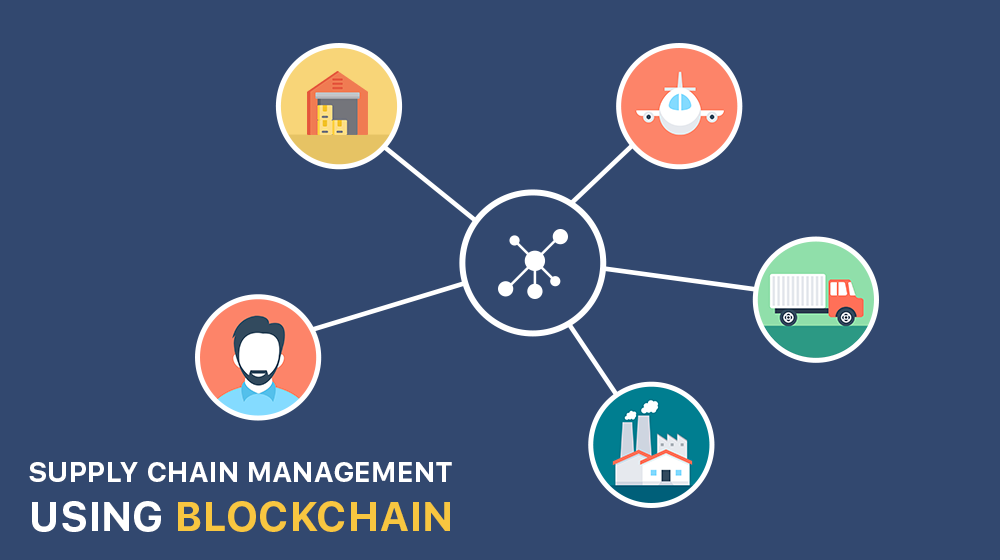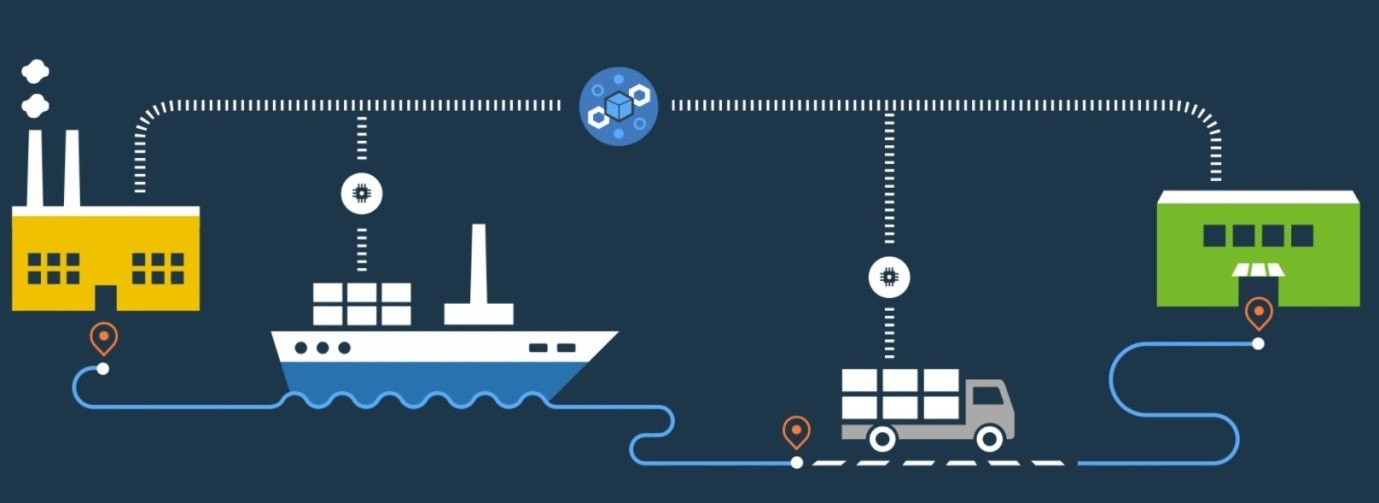What is a Supply Chain?
Before diving into the crux of the matter, first let’s understand the meaning of supply chain. When human and industrial resources come together to deliver the product from the supplier to the consumers, it is called a supply chain. The supply chain amalgamates natural resources, raw materials and components into finished products that are delivered to the end customer. There are a lot of steps and processes that are conducted between getting the raw material and shipping the final good.
The major drawback in the supply chain is weak communication between different organisations involved in the process. Ideally, these supply chains need to work on trust but in a huge organisation where there are several people working, it gets difficult to factor trust. This is exactly where Blockchain can help.
Example of Integration of Blockchain in the Supply Chain
With the help of Blockchain the supply chain can record each and every step of the process. Let’s understand this with the help of an example. Consider the supply chain of an exhibition. There are so many stages and processes involved from the time of deciding an event to execute it. It is a complicated process where different teams are assigned different responsibilities. But what happens when there are delays in the project output? The company loses a lot of money. Here is where the deployment of Blockchain would help.
The Blockchain platform can help coordinate delays in one process or another and adjust future processing in real time. Corporations estimate saving billions of rupees if there are able to install and use this technology.
The Function of a Blockchain in a Supply Chain
There is no central authority over the Blockchain, it’s extremely efficient and scalable. Chain of command is essential for many things, and blockchain has the chain of command built in. Since, all entities on the chain have the same version of the ledger there is no dispute. Everyone on the Blockchain can see the chain of ownership for an asset on the platform. The records on Blockchain cannot be erased and hence, is reliable and important for a transparent supply chain.
How Blockchain Can Help the Supply Chain?
Using the same example (planning an exhibition) we used earlier; let’s illustrate how Blockchain could better the supply chain. One way to ensure that the supply chain process is smooth is to know every step as it is being carried out in real time. For instance, ‘Has the material for the exhibition stall arrived?’, ‘Has the material been shipped from a foreign country?’ etc. Additionally, companies can examine sources, investigate industry certifications, track restricted or dangerous components, and discover storage condition anomalies. This allows for planning for untimely delays in the process.
For example, the delay in an outdoor exhibition during pre-production due to bad weather, issues between the labour force and the client, etc. can be factored into the final product. If a company knows that a particular task is incomplete or is likely to get delayed, they can immediately look for ways to remedy the situation. They can look for alternate sources or pass the information further down the chain as they find necessary.
Since every transaction is recorded on a block and across multiple copies of the ledger that are distributed over many nodes (computers), it is highly transparent. It’s also highly secure since every block links to the one before it and after it. There is not one central authority over the blockchain, and it’s extremely efficient and scalable. Ultimately, blockchain can increase the efficiency and transparency of supply chains and positively impact everything from warehousing to delivery to payment. Chain of command is essential for many things, and blockchain has the chain of command built in.
Blockchain provides consensus—there is no dispute in the chain regarding transactions because all entities on the chain have the same version of the ledger. Everyone on the blockchain can see the chain of ownership for an asset on the blockchain. Records on the blockchain cannot be erased which is important for a transparent supply chain.
Curbing Fraud with Blockchain
From switching high quality raw materials to cheap substitutes or switching the end product with a duplicate one is a classic example of fraud that could occur. Blockchains can help curb fraudulent behaviour by providing authentic records for every batch of raw material. Blockchain can store all the relevant information such as factory conditions, batch numbers, expiration dates, storage and shipping data for every batch of food items supplied by the company. Hence, when the final product is shipped to the end customer, it would have its entire origination history in the Blockchain system.
Making a Difference in the Supply Chain with Blockchain
With the advent of Blockchain, third parties that consolidate and resell goods will become redundant. Their exclusion from the whole supply chain process would make a lot of processes easier, curd fraud and become more transparent. Involving third parties that are situated around the globe can complicate the process, thereby making you lose track in the supply chain process.
Also, instead of using track changes and contracts (checked by different parties), the Blockchain platform provides all the changes made at different stages. All the important information or notes can be stored in the system and be viewed at any time by different parties.
In recent times, Accenture (a global consultancy) developed a Blockchain solution for an international shipping supply chain. The platform could save the entire process, thereby, saving the freight and logistics sector billions of dollars.
If you wish to create a Blockchain technology that could fill the gaps in your supply chain, you can contact the App Scoop development team – https://app-scoop.com/contact-us.html






